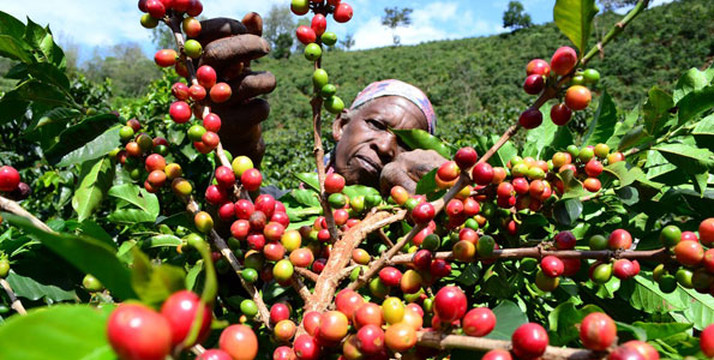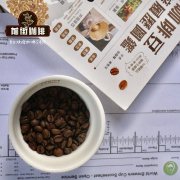Introduction to the History of Colombian Coffee: planting conditions and harvesting processing of Colombian Coffee beans

Professional coffee knowledge exchange more coffee bean information please follow the coffee workshop (Wechat official account cafe_style)
From Ethiopia to the Arab world, through this trade route, coffee has traveled all over the world, across Europe into the "new world", and even become an important economy known as "developing countries".
Looking back at the history of coffee in Colombia, coffee was probably introduced by Venezuela, probably dating back to 1730. The oldest reference to coffee was written by the Reverend Joseph Gumira Joseph Gumilia. In his book El Orinoco Ilustrado y definido (Orinoco pictured and defined), he and others used religious missions to spread and cultivate coffee and other crops from the Old World. Coffee and cultural cultivation. Since then, coffee has occupied a place in Colombian society and is the main consumer item for Spanish families.
During the period 1810-1819, especially during the internal conflict for independence, the commercial cultivation of coffee remained very low. After a period of relative calm, plantations the size of Haciendas began to emerge and were able to produce enough coffee in 1835 to transport more than 2.500 bags, each weighing more than 60 kilograms. By 1850, coffee production had peaked, replacing tobacco and leather as the main trade goods exported to the United States and Europe. At the international level, it has also brought a stable source of profits to the market, leading to a gradual increase in cultivated land, with annual national production rising from 60000 to 600.000 bags of coffee beans from Santander and Antioquia to the Kundinamaka region. Unfortunately, the good times did not last long. At the end of the 19th century, the international price of Colombian coffee fell again because of the outbreak of the Guerra de los mil Dias (1000-Day War).
In the new twentieth century in the post-independence era, another conflict took place in the region. For the first time since Independence Day, a highly violent and chaotic environment has emerged, leading to a crisis in large estates and the inability to continue to operate. As a result, a new mode of production emerged, and the coffee economy was occupied by more and more small farmers and landlords.
Until 1905-1935, the coffee industry in Colombia grew again, thanks to a rise in the number of farmers and a change in political direction, the government and farmers began to work together to reorganize the coffee industry and created the Federacion Nacional de Cafeteros. With improved methods and new technical knowledge, Colombia finally became the world's second coffee producer in 1930, making Colombia the world's second coffee producer in 1930. In 1938, the state established Cenicafe to provide extended services for farmers, quality certification of coffee beans and traceability production line services, increasing the value of Colombian coffee in the international market.
Over the past few decades, Colombia's main coffee plantations have been in the Andes, Antioquia, Boyaca, Caldas, Cauca, Cesar, Kakota, Casanare, Cundinamarca, Guajira, Wirat, Magdalena, Mehta, Narinho, North Santander, Jindio, Risaralda, Santander, Tolima and Valle de cauca, all with good weather and soil conditions. To accommodate the cultivation of high-density crops. Varieties such as the Greater Arabica sp,Catimor are common, not only to produce high-quality flavored beans, but because warm areas are well suited for Canephora species (common in Venezuela, Brazil and Costa Rica), but these places are conflict zones between FARC and other guerrilla groups. Given the current potential for conflict resolution, Colombia has the opportunity to pay more attention to the growth of Canephora varieties, in particular to address climate change-related issues.
When talking about the history of coffee in Colombia, JuanVald è z "is a very rare name, which is a brand founded in 1959 by the premise Federacion Nacional de Cafeteros (Coffee Farmers' Federation), which represents the organized dedication and production of coffee farming by farmers. The image of a man in a hat standing in front of a mountain with a mule has become the representative of Colombian coffee, and Colombia has set up stores in several countries with this international appearance. Now, we in Colombia can be said to be the largest coffee producer, and its products are exported to Japan, Russia and even Hong Kong.
Planting conditions, harvesting and processing
The ideal growth conditions are between 1.200 and 1.800 meters, with a standard temperature of 17-23 degrees Celsius and about 2.000 millimeters of annual precipitation. Thanks to the remnants of volcanic activity, Colombian volcanic soil can produce good coffee even without adding chemical fertilizers to the soil.
The method of handling harvested coffee cherries around the world is very similar. The only thing to do during picking is to avoid using green, immature cherries, and the flavor, smell and other characteristics of the final product can actually change significantly or even become bad, because proper handling is crucial. Similarly, in terms of the time and conditions under which cherries are picked, farmers usually use manual machinery to remove the pulp from soymilk, then carefully wash the beans, then put them on a wooden surface, cover them with plastic sheets, and dry naturally by sunlight and air. It is then acquired by the industry.
Measures to reduce waste in the industry have also come into being. in order to reduce the impact on the ecology, more and more resources have been invested in the production mode, including reducing the use of water and environmentally friendly materials made from coffee in profitable areas such as composting and cosmetics.
As for the baking process, the methods are more or less the same around the world, except that some Colombian companies keep secret some steps or factors as a source of competitiveness.
The combination of coffee and tourism
Imagine that the massive expansion of plantations combined with the diversity of native plant and animal species, coupled with good weather and conservation of rural communities, has opened up new and sustainable profits. If attractive scenery is common in coffee areas all over Colombia, tourism is another source of income for the community, and locals begin to organize guided tours to see the barista's profession while visiting the beautiful scenery. watch the process of making Colombian coffee.
END
Important Notice :
前街咖啡 FrontStreet Coffee has moved to new addredd:
FrontStreet Coffee Address: 315,Donghua East Road,GuangZhou
Tel:020 38364473
- Prev

A different style of African Coffee: the Story of the Coffee producing area of Mount Kilimanjaro, Tanzania
Professional coffee knowledge exchange more coffee bean information please follow the coffee workshop (Wechat official account cafe_style) mention the coffee-producing regions in Africa, which countries do you think of? Is Ethiopia the earliest birthplace of coffee? Is Kenya famous for its sour coffee? Or Rwanda, which is famous for the floral and fruity aromas of coffee? The editor does not intend to introduce the above information in this article.
- Next

Costa Rican Coffee History _ introduction to the Flavor of Costa Rican Organic Coffee cultivation
For more information about coffee beans, please follow the Coffee Workshop (Wechat official account cafe_style) Educardo Matos History Costa Rica is a country next to Panama, located in the central United States, as a bridge between the North and the South, its location makes it a trading hub for aborigines. When outsiders arrive from the old world,
Related
- Detailed explanation of Jadeite planting Land in Panamanian Jadeite Manor introduction to the grading system of Jadeite competitive bidding, Red bid, Green bid and Rose Summer
- Story of Coffee planting in Brenka region of Costa Rica Stonehenge Manor anaerobic heavy honey treatment of flavor mouth
- What's on the barrel of Blue Mountain Coffee beans?
- Can American coffee also pull flowers? How to use hot American style to pull out a good-looking pattern?
- Can you make a cold extract with coffee beans? What is the right proportion for cold-extracted coffee formula?
- Indonesian PWN Gold Mandrine Coffee Origin Features Flavor How to Chong? Mandolin coffee is American.
- A brief introduction to the flavor characteristics of Brazilian yellow bourbon coffee beans
- What is the effect of different water quality on the flavor of cold-extracted coffee? What kind of water is best for brewing coffee?
- Why do you think of Rose Summer whenever you mention Panamanian coffee?
- Introduction to the characteristics of authentic blue mountain coffee bean producing areas? What is the CIB Coffee Authority in Jamaica?

